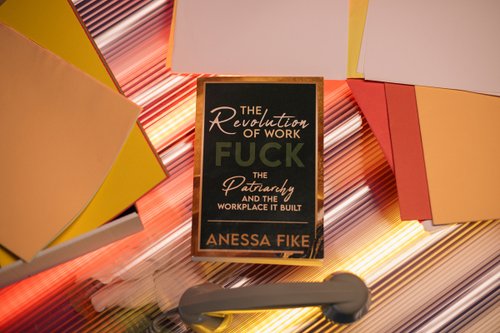Is confidence culture harming women in the workplace?
Apr 14, 2022
6 mins


US-based freelance journalist.
It’s a wonder the women of America are not walking around with severe whiplash given the barrage of advice they get on how to address inequality at work. They’ve been told to ‘Lean In’ and then ‘Lean Out’ in a dizzying stream of advice. Books and articles put women under the spotlight in an attempt to explain the discrimination they face. Despite this scrutiny, the gender pay gap remains and women tend to be the ones to arrange childcare or pick up the groceries. Now a new tome, Confidence Culture by Rosalind Gill and Shani Orgad, takes aim at the “cult” of confidence, which encourages women to look to themselves if they want to improve their situation.
Putting the spotlight on women
The idea that women need to be more confident if they are to get on in their professional lives didn’t start with Sheryl Sandberg, Facebook’s chief operating officer, but her 2013 book on the topic added fuel to the fire. Lean In: Women, Work, and the Will to Lead took the world by storm and has sold more than four million copies since then. Sandberg’s book was a call-to-arms for women to unleash their suppressed ambitions, to “keep their hands up” and to “sit at the table.” Her rationale acknowledges institutional constraints, but ultimately it’s women she is exhorting to take action. She concludes: “We hold ourselves back in ways both big and small, by lacking self-confidence, by not raising our hands, and by pulling back when we should be leaning in. We internalize the negative messages we get throughout our lives — the messages that say it’s wrong to be outspoken, aggressive, and more powerful than men. We lower our own expectations of what we can achieve.” It was an intoxicating premise and it inspired women to believe that all they needed to do if they wanted to succeed was to speak up and be confident.
Exhaustion overload
That same idea left many women exhausted trying to keep up with social expectations that hadn’t gone away and the need to beat the boys on ambition. Several surveys show women are dealing increasingly with high levels of stress at work. In a 2019 Gallup survey of US employees, 30% of women and 27% of men said they “always” or “very often” felt burned out at work. By 2021, the gap had widened to 34% of women reporting feeling burned out, compared to 26% of men.
Studies also show that it is inherent inequalities at work, such as lower pay and childcare responsibilities, that heap stress on women. About 50% of the women surveyed by the American Psychological Association last year and 43% of men said that paying employees fairly would achieve a “psychologically healthy workplace”, while 47% of women and just 36% of men said allowing them more flexibility would make a difference. “The focus on pay is not surprising considering that women are less likely than men to say they receive adequate monetary compensation for their contributions at work (65% vs 74%),” the report adds.
When women are blamed
Confidence Culture is a defense of the burned-out working woman as it seeks to shift the onus for achieving success away from them. “Fundamentally, Lean In calls on women to ‘internalize the revolution’ (the title of the book’s first chapter), that is, to internalize the political project of challenging gender inequality in the workplace by treating both the problem and its solutions as personal, individualized, and psychologically based,” write Gill and Orgad, who are both academics based in the UK.
“We remain deeply uncomfortable about the way the confidence cult(ure) is framed as the solution, formulating inequality and injustice in individualistic terms and shifting the blame and responsibility for gender inequality away from institutional and structural injustices to assumed ‘deficits’ in women,” they add.
Confidence Culture makes an important case as to how damaging it is to blame women for inequality and to put the onus on them to fix it. But it doesn’t identify many of the institutional injustices that women face, particularly at work, and it provides no examination of the ways to challenge them. Instead, it deconstructs recent popular culture and writing built around marketing confidence to women. Even the singer Lizzo gets some serious forensic analysis as the current harbinger of self-love.
“Confidence Culture (…) doesn’t identify many of the institutional injustices that women face, particularly at work, and it provides no examination of the ways to challenge them.”
What businesses need to do
So if there is a move away from placing the onus on women to overcome inequality, where should the spotlight be now? Melanie Ho, a Washington DC-based organizational consultant and author of Beyond Leaning In, says tackling the barriers to women’s equality at work will require employers to take them seriously, in the same way, they address other problems in their organizations. “I think of it as when companies are trying to figure out if they have a sales problem: think about how many metrics they’ll look at. They will look at every single thing that could be impacting sales and marketing,” she says. “And if we applied that rigor to diversity, equity, and inclusion, it wouldn’t just be, ‘Is there a woman on your board?’ It would look across different levels, at different types of jobs in the organization, at the hiring pipeline, at the retention rate, at engagement rates, there would be just so many more metrics that organizations would regularly evaluate.”
“Tackling the barriers to women’s equality at work will require employers to take them seriously, in the same way they address other problems in their organizations.”
Beyond Leaning In is written as a novel with characters that showcase specific examples of the barriers women face. When a plum assignment comes up, a female character is by far the better candidate but the role goes to a man because she doesn’t work full-time; she has a flexible arrangement that means she works 80% of the hours he does. The pandemic and the move to hybrid working, especially among women, could exacerbate these biases, Ho warns. “If offices aren’t careful, and if the upper management is in the office, their biases will make it that much harder for anybody who’s not in the office full-time,” she says.
Turning to regulation
A number of countries have introduced regulations in an attempt to tackle discrimination against women and to level the opportunity playing field. These include generous paternity leave specifically for men in Nordic countries, requirements in the UK for companies to publish data on the gender pay gap and bans in some US states, such as California, Connecticut, and Massachusetts, on employers asking prospective employees about their previous salaries, in an attempt to stop perpetuating pay gaps for women.
Josie Cox, a New York-based writer on workplace issues whose upcoming book looks at women, money, and power, says tackling the problem will require even more forceful regulation. There is little to stop companies from misreporting their gender pay gap in the UK, for example, and too often the women on boards are non-executive directors or the human resources director – jobs that are critical to a business’s operations but that do not usually come with the power to fundamentally change the culture and politics of a firm. Perhaps penalizing companies, forcing them to be transparent, or denying them government support and tax breaks if they don’t create equal opportunities for all genders is what is needed, Cox says. “Leaning in and the confidence culture is not the answer, that’s the lazy approach. We have to start taking gender equality and equality of opportunity seriously,” she says.
“Leaning in and the confidence culture is not the answer, that’s the lazy approach. We have to start taking gender equality and equality of opportunity seriously.”
Standing together
The other way for women to challenge institutional obstacles is through collective action, says Kim Kelly, whose new book Fight Like Hell details the untold stories of the achievements of women and minorities in the US labor movement. “Labor unions and grassroots workers’ rights organizations have always been some of the greatest vehicles for progress towards gender equity and equality in this country, and strengthening and updating our outdated labor laws in order to protect the most vulnerable workers would go a long way towards clearing some of the many hurdles that women and non-binary people face on the job,” she says.
Perhaps instead of turning to self-help books, such as Lean In, to overcome problems at work, women need to turn to the woman next to them. The drive across the US right now to unionize workplaces has certainly got many people excited that real change at the company and regulatory level can be achieved, as workers band together at Amazon, Starbucks, universities, tech companies, newsrooms, hospitals, and classrooms. “We are stronger together, and no amount of capitalist indoctrination on the supposed merits of ‘girlboss’ culture can change history – or reality,” says Kelly.
“We are stronger together, and no amount of capitalist indoctrination on the supposed merits of ‘girlboss’ culture can change history – or reality.”
Photo: Welcome to the Jungle
Follow Welcome to the Jungle on Facebook, LinkedIn, and Instagram, and subscribe to our newsletter to get our latest articles every day!

More inspiration: DEI

Sh*t’s broken—Here’s how we fix work for good
Built by and for a narrow few, our workplace systems are in need of a revolution.
Dec 23, 2024

What Kamala Harris’s legacy means for the future of female leadership
The US presidential elections may not have yielded triumph, but can we still count a victory for women in leadership?
Nov 06, 2024

Leadership skills: Showing confidence at work without being labeled as arrogant
While confidence is crucial, women are frequently criticized for it, often being labeled as arrogant when they display assertiveness.
Oct 22, 2024

Pathways to success: Career resources for Indigenous job hunters
Your culture is your strength! Learn how to leverage your identity to stand out in the job market, while also building a career
Oct 14, 2024

Age does matter, at work and in the White House
What we've learned from the 2024 presidential elections about aging at work.
Sep 09, 2024
The newsletter that does the job
Want to keep up with the latest articles? Twice a week you can receive stories, jobs, and tips in your inbox.

Looking for your next job?
Over 200,000 people have found a job with Welcome to the Jungle.
Explore jobs